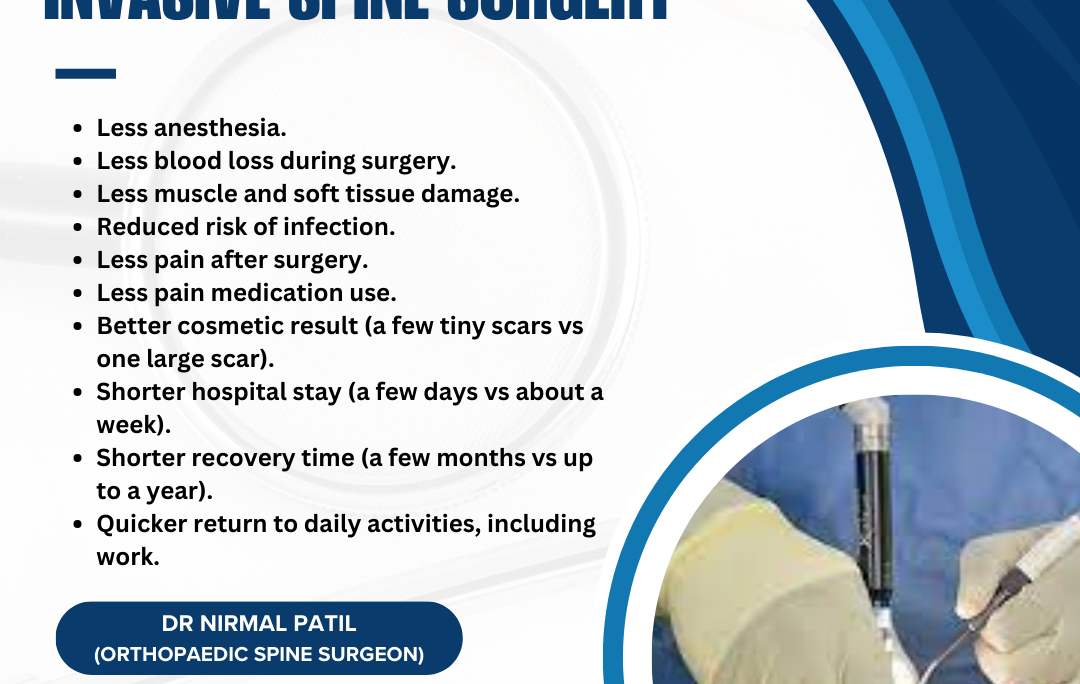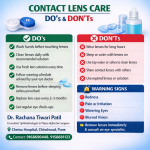Introduction:
In the realm of spinal healthcare, the advent of Minimally Invasive Spine Surgery (MISS) has ushered in a new era of hope and possibilities for patients suffering from debilitating spinal conditions. This groundbreaking approach to spinal surgery represents a paradigm shift from traditional open surgeries, offering a multitude of benefits that encompass improved patient outcomes, faster recovery times, and enhanced quality of life. In this comprehensive blog post, we embark on a journey to explore the transformative potential of minimally invasive spine surgery, shedding light on its multifaceted advantages and real-world applications.
Section 1: Understanding Minimally Invasive Spine Surgery
1.1 Definition and Evolution of MISS: Minimally Invasive Spine Surgery, or MISS, refers to a surgical approach that utilizes advanced imaging techniques, specialized instruments, and small incisions to perform spinal procedures with minimal disruption to surrounding tissues. The evolution of MISS can be traced back to the late 20th century, with significant advancements in technology and surgical techniques driving its widespread adoption in recent years.
1.2 Key Components of MISS: Central to the success of MISS are several key components, including advanced imaging modalities such as MRI and CT scans, specialized surgical instruments, and the expertise of highly trained surgeons. These elements work in tandem to enable precise and targeted interventions while minimizing trauma to adjacent tissues.
1.3 Common Applications of MISS: MISS techniques are employed in the treatment of a wide range of spinal conditions, including herniated discs, spinal stenosis, degenerative disc disease, spinal tumors, and spinal deformities such as scoliosis. From decompression procedures to spinal fusion and disc replacement surgeries, MISS offers versatile solutions for diverse patient populations.
Section 2: The Multifaceted Benefits of Minimally Invasive Spine Surgery
2.1 Reduced Trauma and Tissue Damage: One of the primary advantages of MISS is its ability to minimize trauma to surrounding muscles, ligaments, and tissues. By utilizing smaller incisions and specialized surgical techniques, MISS reduces the risk of postoperative complications such as excessive bleeding, tissue scarring, and muscle damage.
2.2 Faster Recovery Times: Compared to traditional open surgeries, patients undergoing MISS typically experience shorter hospital stays and faster recovery times. The minimally invasive approach reduces postoperative pain and discomfort, enabling patients to return to their daily activities and regain mobility more rapidly.
2.3 Enhanced Cosmetic Outcomes: The smaller incisions used in MISS result in less visible scarring and improved cosmetic outcomes compared to traditional open surgeries. This aesthetic benefit is particularly significant for patients who prioritize cosmetic results and wish to minimize the visible signs of surgery.
2.4 Reduced Risk of Infection: Minimally invasive techniques are associated with a lower risk of surgical site infections due to the smaller incisions and reduced exposure of tissues to pathogens. By minimizing the risk of infection, MISS contributes to improved patient safety and overall surgical outcomes.
2.5 Preservation of Spinal Stability: In many cases, MISS procedures allow for the preservation of spinal stability and motion, reducing the need for extensive spinal fusion surgeries. This preservation of spinal biomechanics can lead to better long-term outcomes and reduced risk of complications such as adjacent segment degeneration.
2.6 Decreased Blood Loss: The precise nature of MISS techniques results in minimal blood loss during surgery, reducing the need for blood transfusions and associated complications. This benefit is particularly advantageous for patients with underlying medical conditions or those at increased risk of bleeding.
2.7 Lower Risk of Postoperative Complications: Minimally invasive approaches have been shown to be associated with a lower incidence of postoperative complications such as nerve damage, muscle weakness, and spinal fluid leaks. By minimizing the disruption to surrounding tissues, MISS reduces the likelihood of complications and facilitates smoother recovery trajectories.
2.8 Improved Pain Management: Patients undergoing MISS often experience less postoperative pain and require lower doses of pain medication compared to those undergoing traditional open surgeries. The reduced tissue trauma and nerve irritation associated with minimally invasive techniques contribute to improved pain management and patient comfort.
2.9 Enhanced Precision and Visualization: Advanced imaging technologies such as intraoperative navigation systems and fluoroscopy enable surgeons to visualize the surgical site with unparalleled precision during MISS procedures. This enhanced visualization allows for more accurate placement of implants and instrumentation, leading to improved surgical outcomes and patient satisfaction.
2.10 Customized Treatment Approaches: MISS techniques can be tailored to meet the unique needs of each patient, allowing for customized treatment approaches based on factors such as the severity and location of the spinal condition, as well as the patient’s overall health status and treatment goals. This individualized approach maximizes the effectiveness of treatment while minimizing risks and complications.
Section 3: Real-World Applications and Clinical Evidence
3.1 Clinical Studies and Outcomes: Numerous clinical studies have demonstrated the efficacy and safety of MISS techniques across a wide range of spinal conditions. These studies have consistently shown favorable outcomes in terms of pain relief, functional improvement, and patient satisfaction, supporting the widespread adoption of minimally invasive approaches in spinal surgery.
3.2 Comparative Studies: Comparative studies comparing MISS to traditional open surgeries have highlighted the superior outcomes and reduced morbidity associated with minimally invasive techniques. From shorter hospital stays to lower complication rates, the benefits of MISS are evident across various surgical procedures and patient populations.
3.3 Patient Reported Outcomes: Patient-reported outcomes measures (PROMs) provide valuable insights into the subjective experiences and functional outcomes of individuals undergoing MISS procedures. High levels of patient satisfaction, improved quality of life, and faster return to work are commonly reported outcomes, underscoring the transformative impact of minimally invasive spine surgery on patients’ lives.
Section 4: Overcoming Challenges and Future Directions
4.1 Technical Challenges: While MISS techniques offer numerous benefits, they also present technical challenges for surgeons, including the learning curve associated with mastering new surgical approaches and technologies. Continued education and training are essential to ensure optimal outcomes and minimize potential complications.
4.2 Expanding Indications: As technology continues to advance and surgical techniques evolve, the indications for minimally invasive spine surgery are expanding to encompass a broader range of spinal conditions and patient populations. From pediatric spinal disorders to complex revision surgeries, MISS offers promising solutions for previously challenging cases.
4.3 Integration of Robotics and Augmented Reality: The integration of robotics and augmented reality into MISS procedures holds great promise for further enhancing surgical precision and outcomes. Robotic-assisted systems enable surgeons to perform complex maneuvers with greater accuracy, while augmented reality technologies provide real-time guidance and visualization, improving intraoperative decision-making and patient safety.
4.4 Patient Education and Advocacy: Effective patient education and advocacy efforts are crucial to ensure that individuals are informed about the benefits and risks of minimally invasive spine surgery and can make empowered decisions regarding their treatment options. By raising awareness and promoting access to MISS, healthcare providers can help more patients benefit from this transformative approach to spinal care.
Conclusion: Minimally Invasive Spine Surgery represents a monumental advancement in the field of spinal healthcare, offering a myriad of benefits to patients and surgeons alike. From reduced trauma and faster recovery times to enhanced precision and improved outcomes, MISS has revolutionized the treatment of spinal disorders and transformed countless lives around the world. As technology continues to evolve and surgical techniques advance, the future of minimally invasive spine surgery holds even greater promise, paving the way for improved patient outcomes and enhanced quality of life.
#pune #pcmc #chinchwad #hospital #medical #medicalservices #spinesurgeon #backspecialist #sciatica #sciaticnerve #sciaticapain #sciaticatreatment #spinesurgery #spinespecialist #spinedoctor #backpaindoctor #endoscopicspinesurgery #orthopaedicsurgeon #mistlifsurgery #cervicalpain #spinalcord #rediculopathy #backpainrelief #slippeddisc #spine #neckpain #spinalstenosis #lumberlordosis #backbonesurgery













